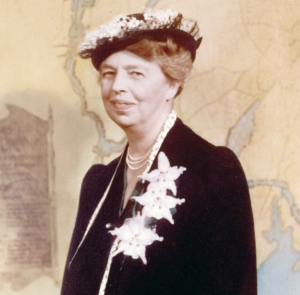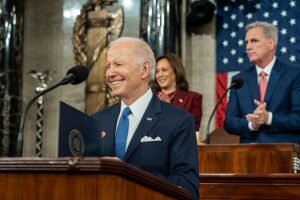Power Politics in the Arctic: China and India
In the Arctic, global warming is opening opportunities for the allocation of needed resources even to non-Arctic states.

Image Credit: Alexey Solodov/Alamy
The melting of the glaciers is changing geopolitical arrangements. In the Arctic, global warming is opening opportunities for the allocation of needed resources even to non-Arctic states. The region is indeed opening up to new power dynamics and competition as states propel their economic, military, and political claims. New powers, such as China and India, have joined the resources race; but what can they really gain from the frozen Arctic lands? And how will this affect the regional and global balance of power?
Geospatially, the Arctic is the region above the Arctic Circle, the imaginary line at approximately 66° 33’ N. Here, the sun sets and rises only once every year. As a consequence, this region has a very particular ecosystem. The ice that forms acts as a cooling lid for the ocean from warming too much, functioning as the planet’s air conditioning system. However, because of the rise of CO2 and other pollutants, the Arctic has been heating faster than any other region on the planet. According to NASA, the 13 lowest sea-ice extents–or the areas in which satellite sensors show an area to be at least 15% covered in ice–have all occurred in the past 13 years.
The changing environment is opening new opportunities. The receding ice is opening shipping routes through the Bering Strait. Along the Russian coast, the Northern Sea Route will be incredibly beneficial to Asian powers as it will drastically diminish shipping times between East Asia and Europe. Between 2012 and 2021, cargo volume has already grown from around 2 million tons to 35 million tons. But the interest in the region is not limited to commercial transport and shorter routes. According to the latest estimates, the region holds 13% of the world’s undiscovered oil and 30% of the world’s undiscovered gas deposits. There is a valuable energetic treasure under the ice that is slowly coming to the surface, and, for states, obtaining control over those resources would be a substantial gain considering the current geopolitical and energetic circumstances. Additionally, the Arctic also contains “valuable mineral deposits, including some rare minerals critical to making electronics.” As of today, although the region remains peaceful, Arctic states have been focusing their strategy on military buildups, anticipating future tensions over the control of these resources.
Unlike Antarctica, which is governed by the Antarctic Treaty System, disputes in the Arctic are mediated by the Arctic Council, a “high-level forum for cooperation between Arctic states, indigenous communities, and other Arctic residents on issues of sustainable development and environmental protection.” The Council is composed of the eight Arctic states–Canada, the United States, Denmark (through Greenland and the Faroe Islands), Russia, Sweden, Finland, Iceland, and Norway, as well as Observers states, such as India and China. Until recently, because of the strict non-military nature of the Council, its member-states have been able to avoid getting involved in global geopolitical tensions. However, following the invasion of Ukraine and Russia’s consequent violation of international law, the seven other states issued a joint statement in February 2022 to “temporarily pause” their participation in all meetings of the Arctic Council. This raises questions about the ability of the Council to control the region and restrain the influence of non-Arctic states.
Indian Prime Minister Narendra Modi unveiled the country’s first “India Arctic Policy” (IAP) in January 2021, in line with India’s rising status as a scientific and technical power and its foreign policy objective to counter China’s ambitions in the Arctic. The IAP enunciates the 5 main areas of India’s engagement in the region: Science and Research; Economic and human development cooperation; Transportation and connectivity; Governance and international cooperation; National capacity building.
India is indifferent regarding the opening of new trading routes to Europe through the Bering Strait, as its location in the South prevents it from gaining any actual advantages from it. Instead, its primary interests concern the scientific and research opportunities of the Arctic. Recent studies have shown how changes in ice melting rates affect the sea-level rise and South Asian monsoons and droughts. Data collection has reportedly been essential in preventing these events, saving thousands of lives.
However, despite the apparent advantages of building its presence in the region, India has been reluctant to strengthen its diplomatic ties with Arctic states other than Russia. Among the Arctic Council members, India’s most vital diplomatic, military, and economic relationship is with Russia. The two countries have been longtime defense partners, and a large part of New Delhi’s military arsenal continues to be Russia. Recently, Modi asserted that the India-Russia partnership in the energy sector “can help bring stability to the global energy market.” Nevertheless, Moscow’s invasion of Ukraine and the position of the Arctic states on the matter complicates India’s position in the region. India’s closeness with Russia means it finds itself on the opposite side to most member-states in the Arctic Council. And this leaves China undisputed in its rise to a “near-Arctic state.”
Like India, China has large naval ambitions. The Red Dragon is a net importer of petroleum, and “consumes 23 percent of global energy consumption.” The investment in the Arctic is, therefore, mainly strategic. By gaining more influence in the region, China would gain a stable source of gas and oil for its energy needs, as well as secure a new trading route that bypasses the politically unstable regions of the Persian Gulf and the South China Sea.
Since 2017, China has constantly been trying to buy landmass in the Arctic to support its claims as a near-Arctic state. However, the Arctic states have strong policies against the involvement of outside states in their territories. At the time, the Norwegian government intervened to prevent the Chinese acquisition. Although unsuccessful, the Chinese efforts show the importance of the Arctic for its bigger strategy. Controlling the resources in the Arctic, as well as the new trading routes, will be a considerable step for Chinese attempts at regional and global hegemony. The Polar Silk Road, a part of the bigger Belt and Road Initiative, will push for the internationalization of the Arctic’s regional governance system. According to recent reports, Beijing still has no military presence in the area.
If China were to reach its goal and gain influence on the Arctic policy-making processes, there would be distinct consequences for India’s status in Asia. The control over new energetic resources and trading routes will affect the Asian states’ dependence on the Red Dragon. China will then likely use this leverage in its favor to settle territorial and geopolitical disputes with its neighbors. Moreover, as India pushes for more influence regionally, a more powerful China will disturb India’s plan of reassuring countries in the South China Sea, paving the road for China’s regional hegemony.
China’s race to regional hegemony does not affect only Asia but will have long-term consequences for global energy and economic autonomy. Policymakers have been calling for India to mark its presence in the Arctic by developing specialized vessels. As of today, approved plans include the development of six new nuclear attack submarines to be used in the Arctic region. Although the Arctic remains a peaceful region and India, as a great regional power, has the responsibility to respect the spirit of international peace and cooperation, it would be naïve to not prepare for future possible tensions. However, India’s shipbuilding industry is still focused on the development of warm waters ships, depending on hiring Polar Class ships from other agencies. Pursuing a meaningful presence in the region without the necessary ships persistently weakens Indian claims.
The power politics between the two Asian countries are then moving to a new battlefield for the control of undiscovered resources and quicker trading routes. Although the Nordic countries have always seen India as a more trustworthy partner than China, Modi’s claims have not been translated into policy actions. Thus, the Modi administration must reinstate its international commitment to the region, particularly concerning environmental safeguards, a priority for Arctic states. Such commitment would avoid a further expansion of the Chinese influence and eventual hegemonic control of energy resources.
Claire Bracco (she/her) is a second-year MA candidate in International Relations at NYU. Raised between Italy and France, she holds a BA in Politics and International Relations from the University of Manchester and decided to continue on this path to deepen her understanding of human rights violations and public diplomacy. She is currently working as an intelligence analyst for The Counterterrorism Group and plans to use this experience to write a thesis on radicalization due to environmental degradation. When not working, Claire is exploring the New York food scene trying to find the best Italian pizza restaurant in the city. Claire also holds a Master’s in Piano from the Conservatorio A. Scarlatti.







I rarely have read an article so well written, incisive, thought-provoking..brilliant . Brava Miss Claire Bracco